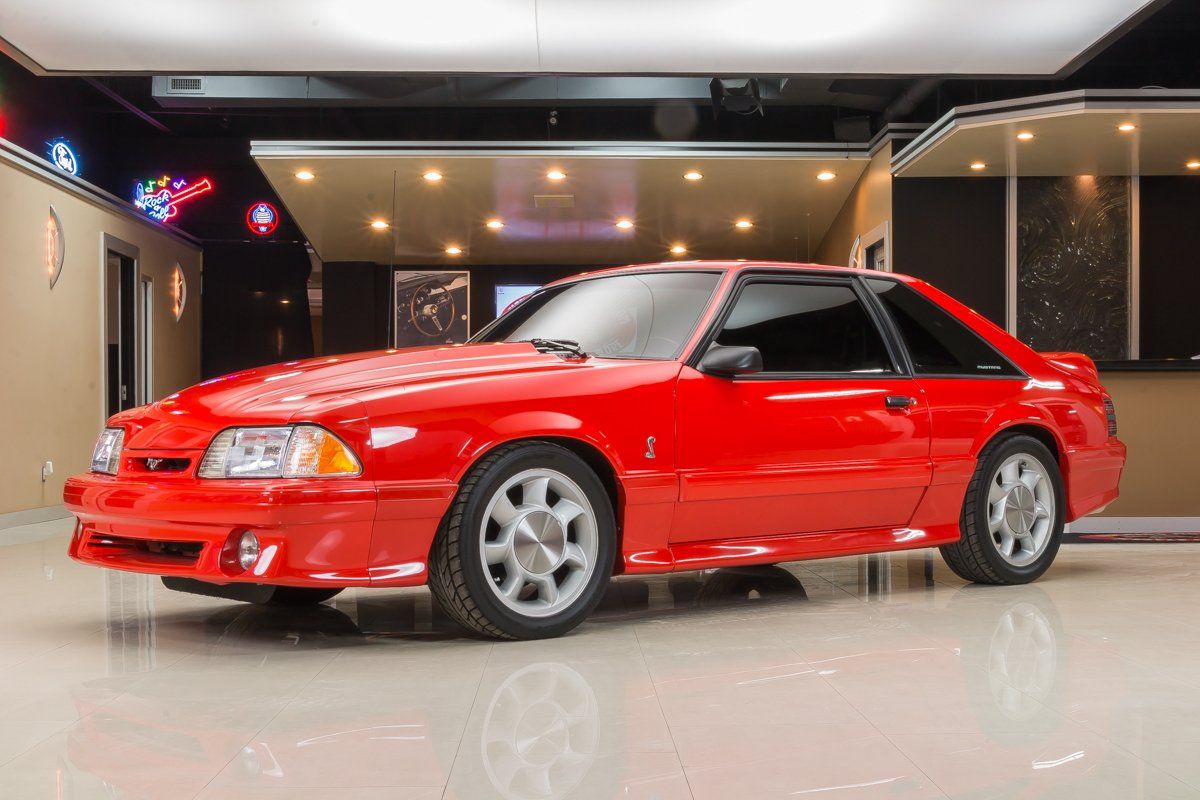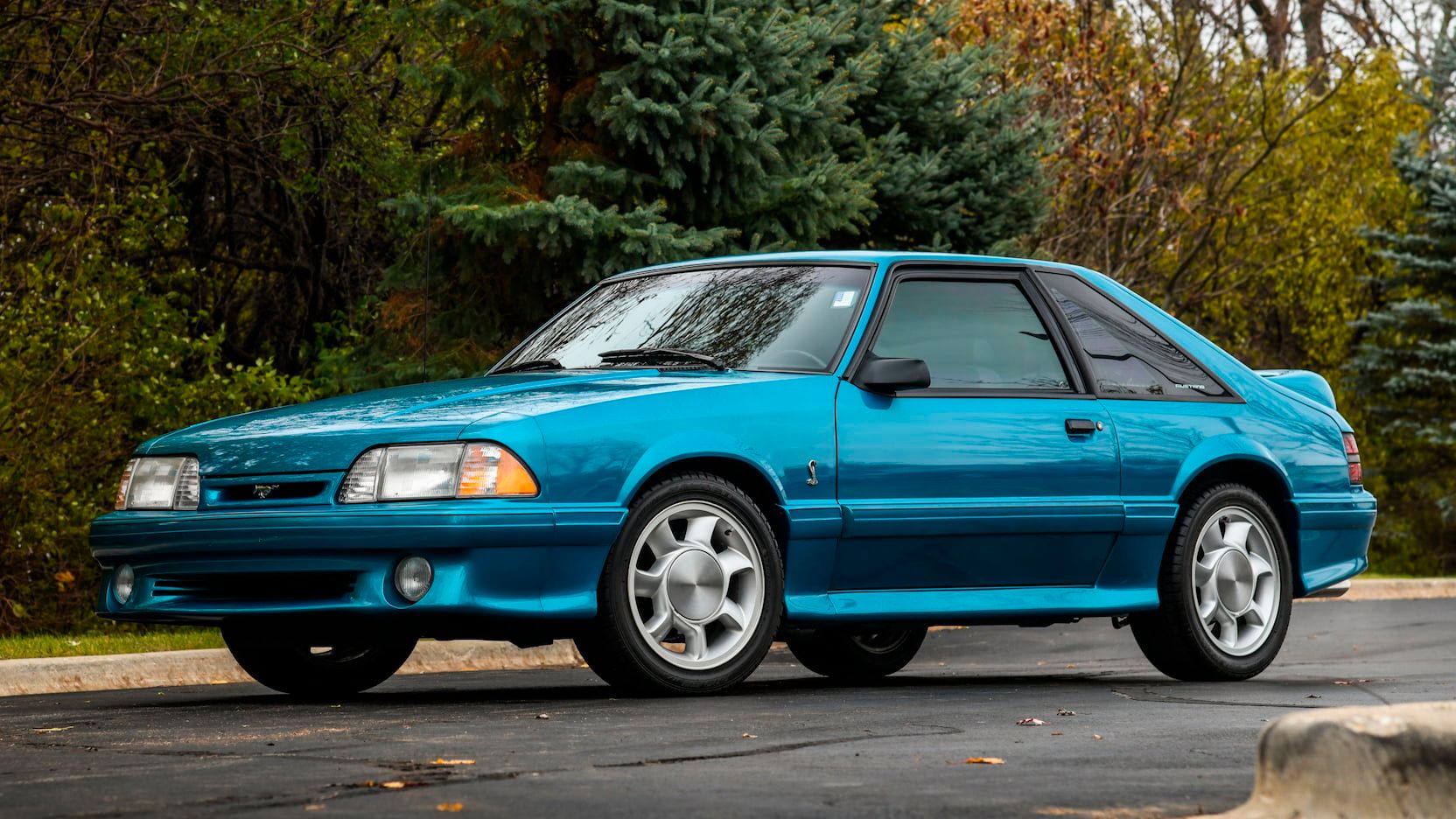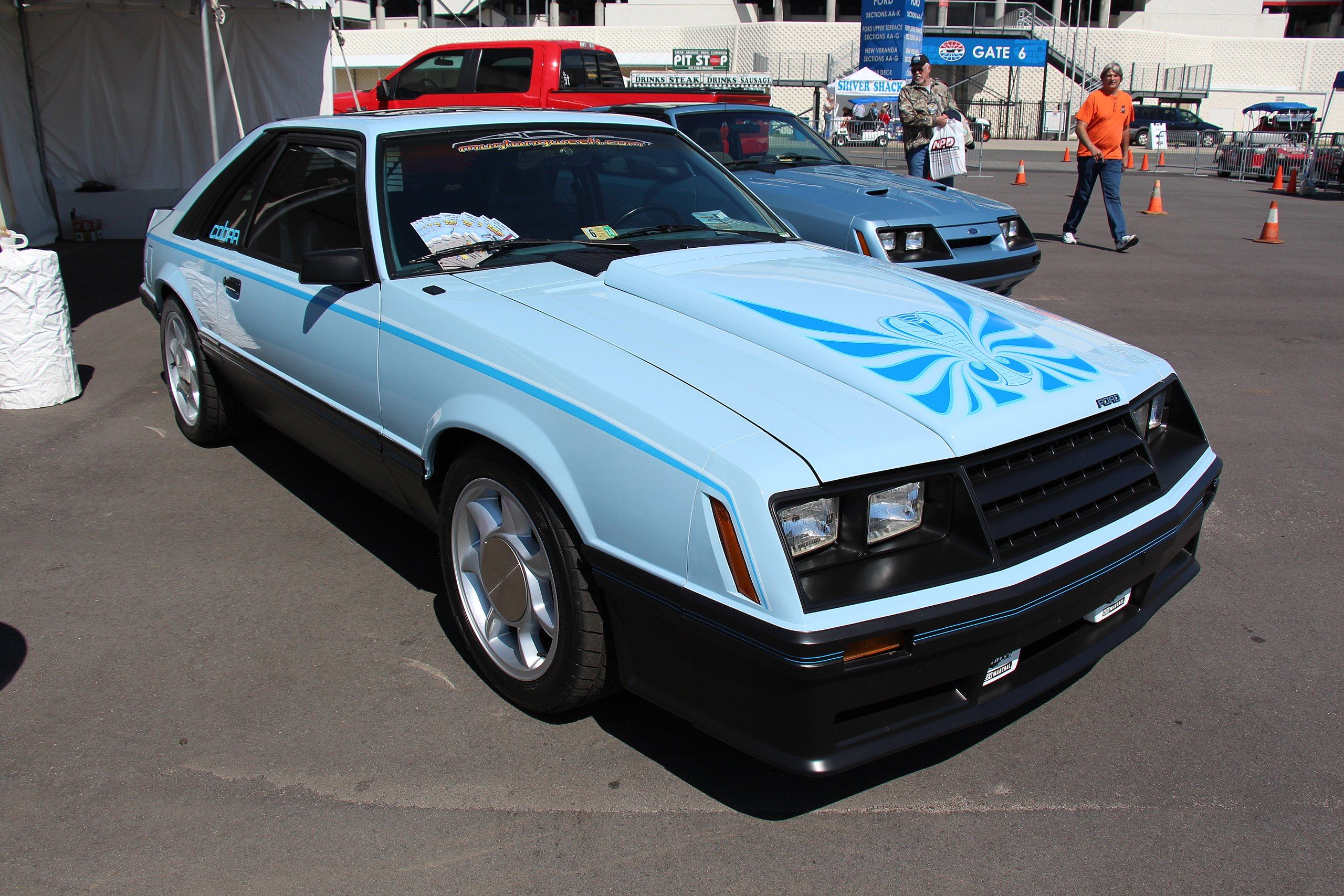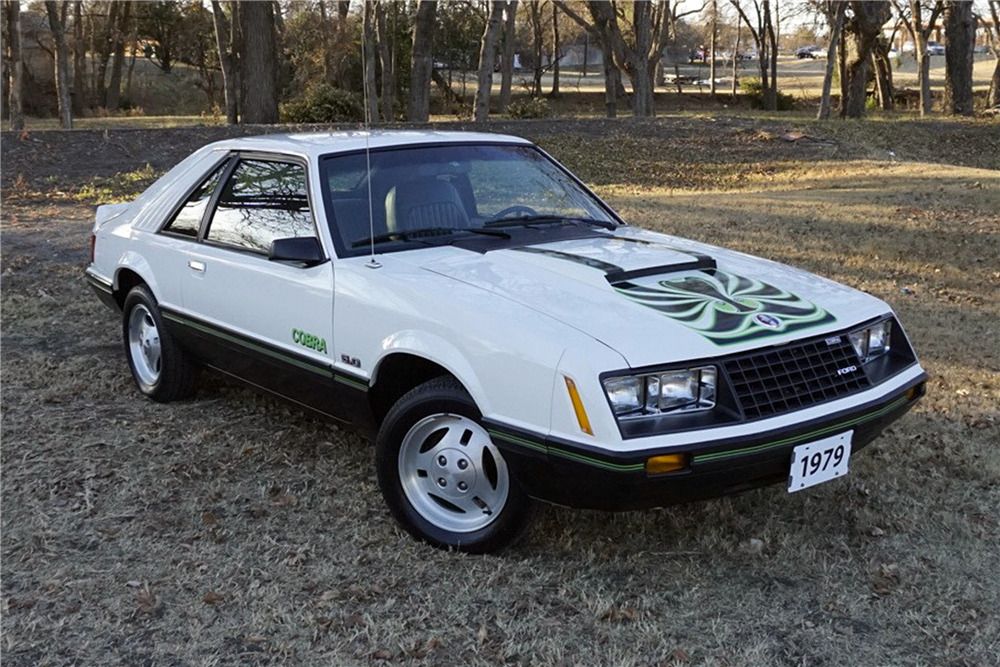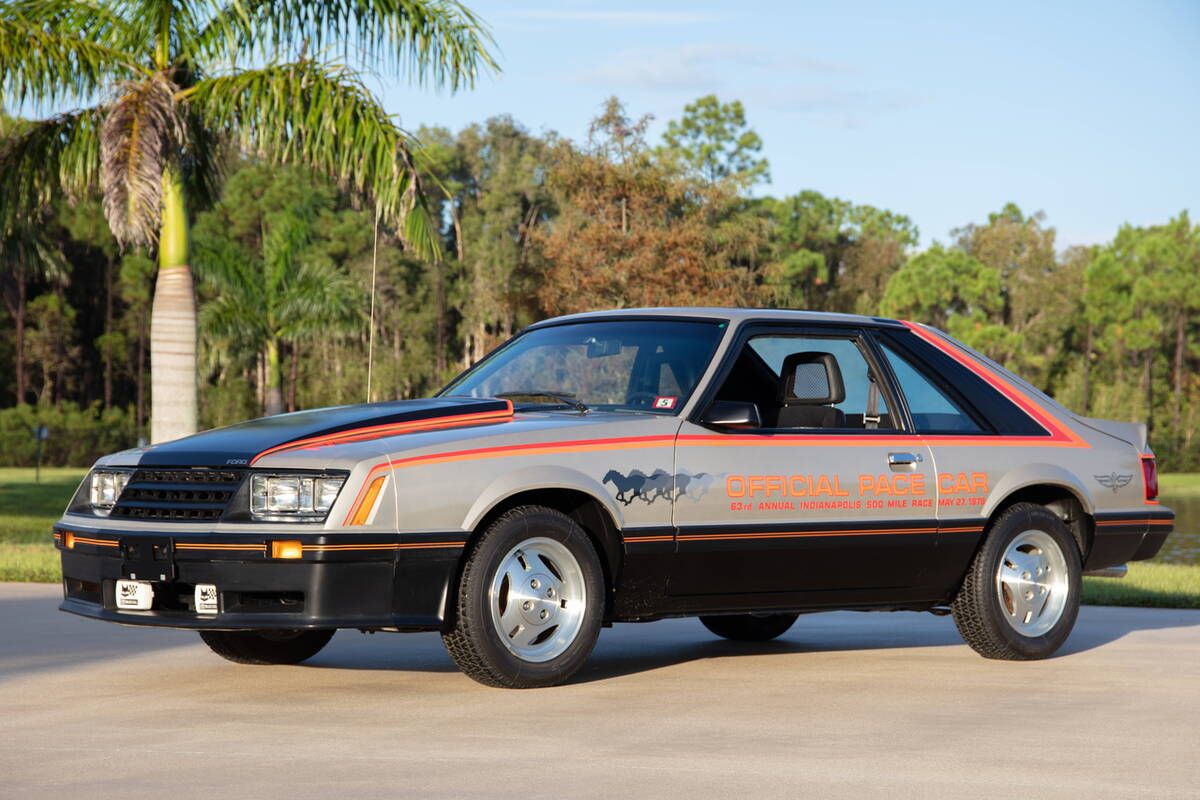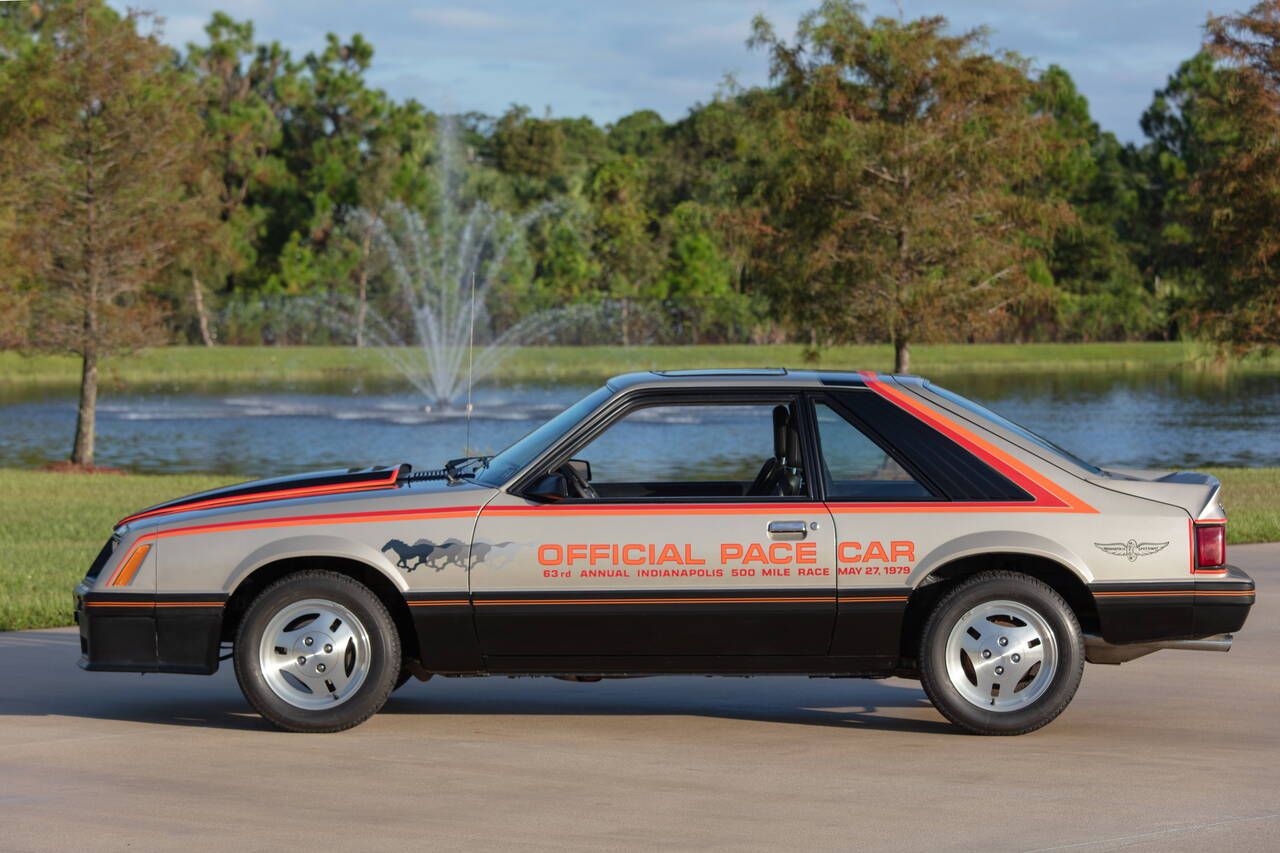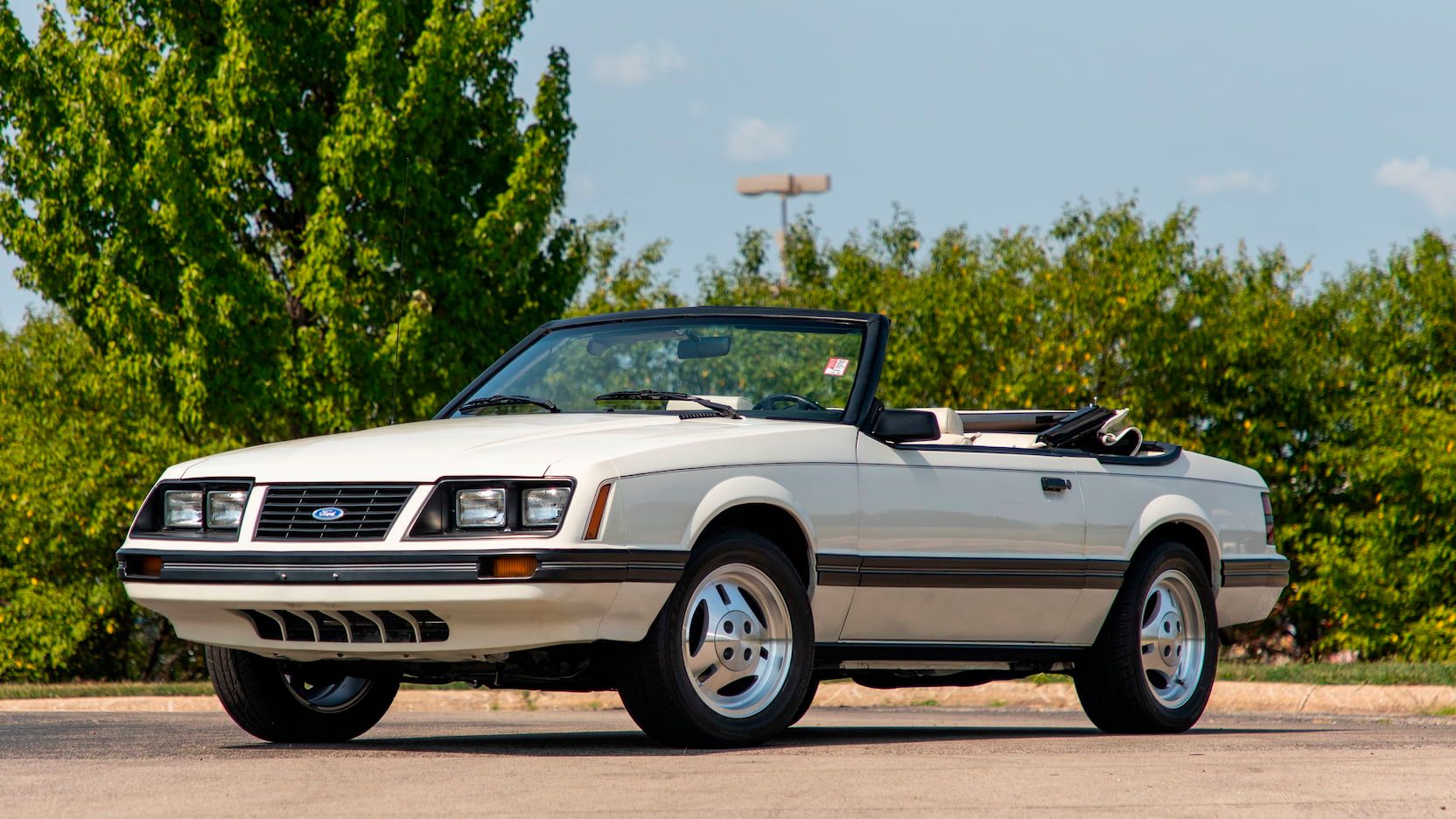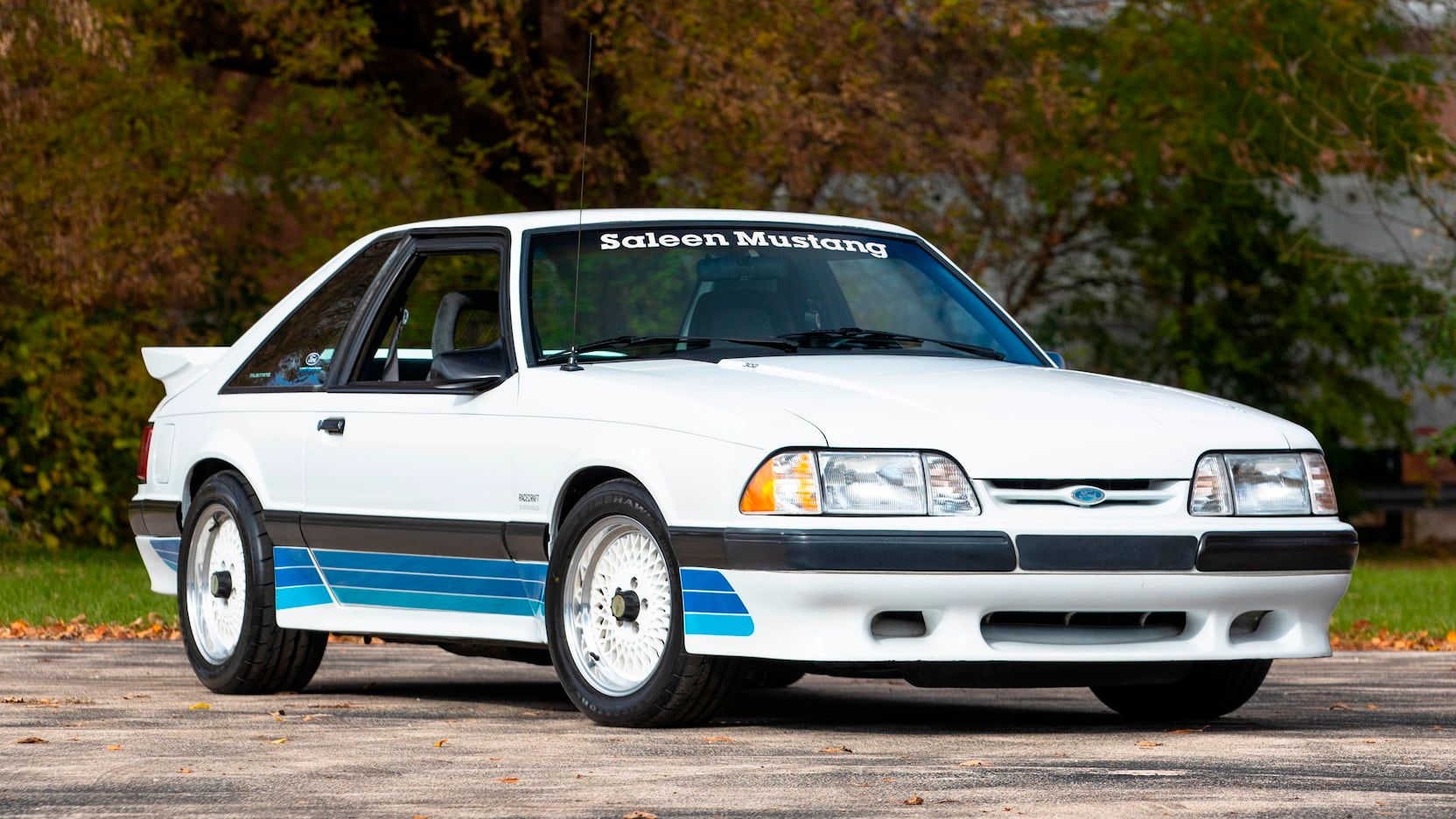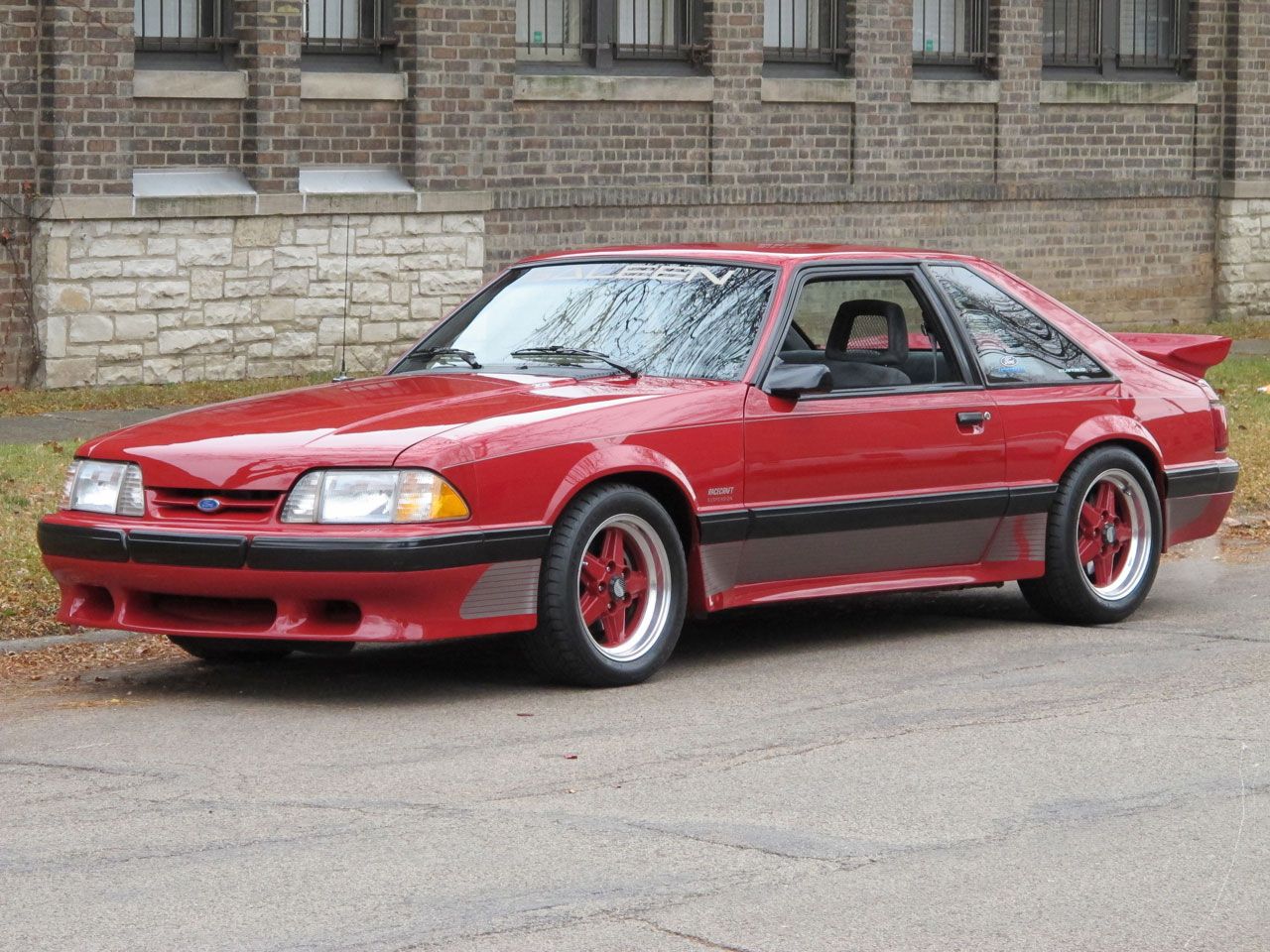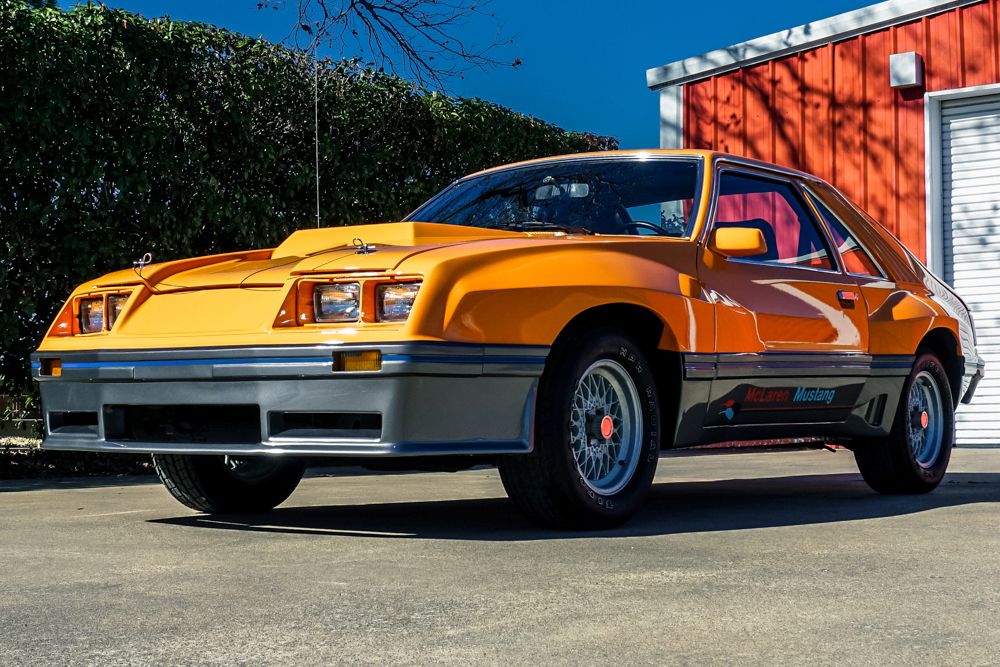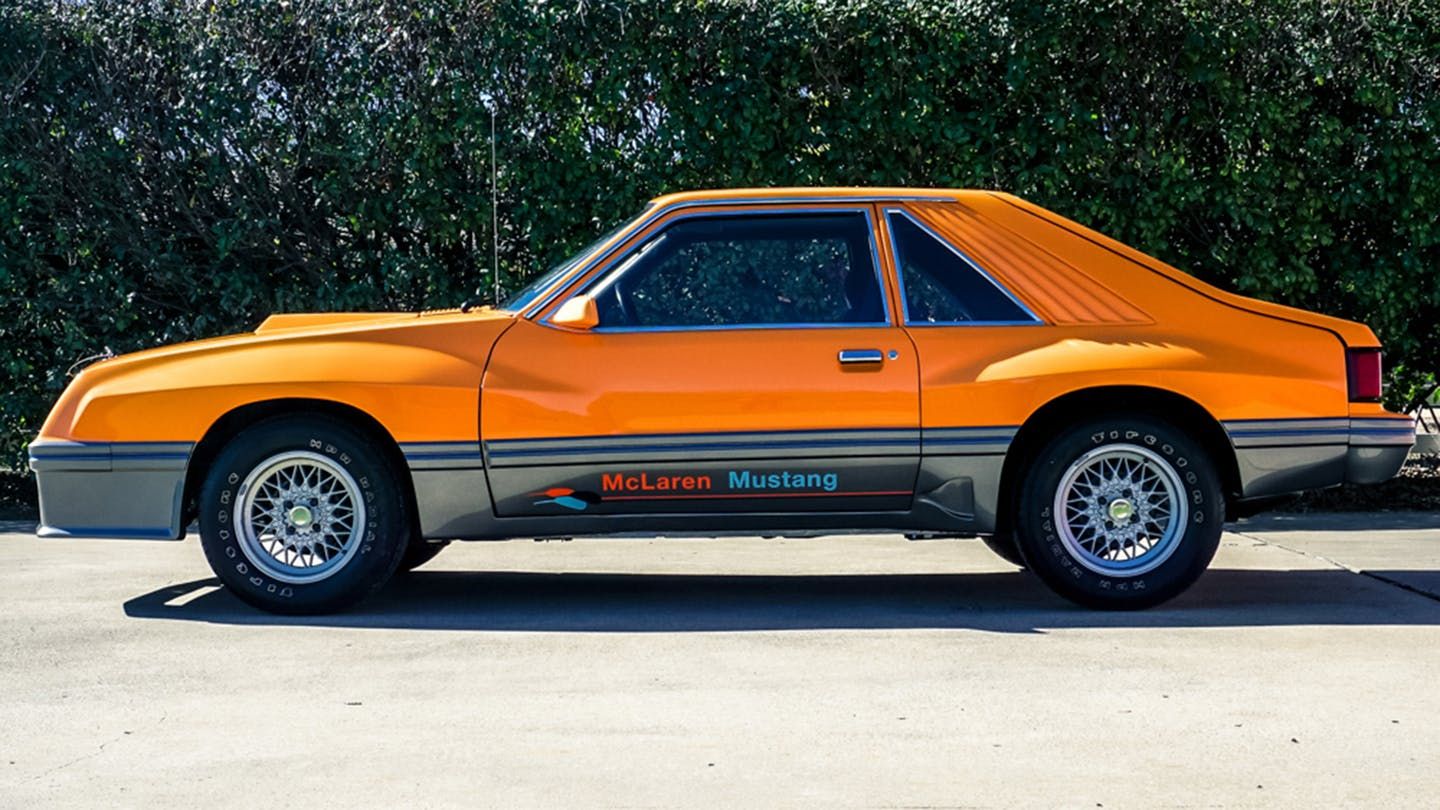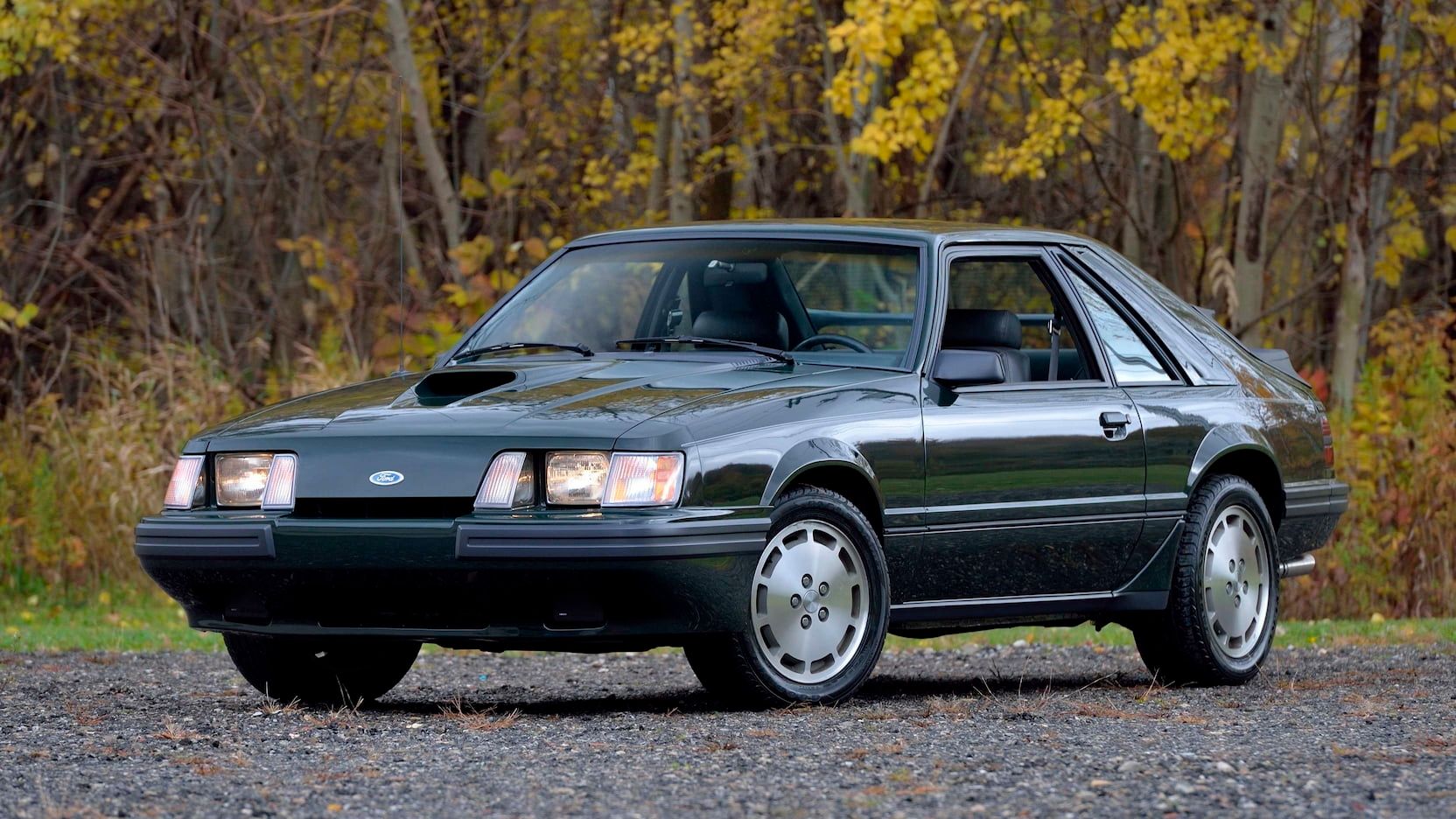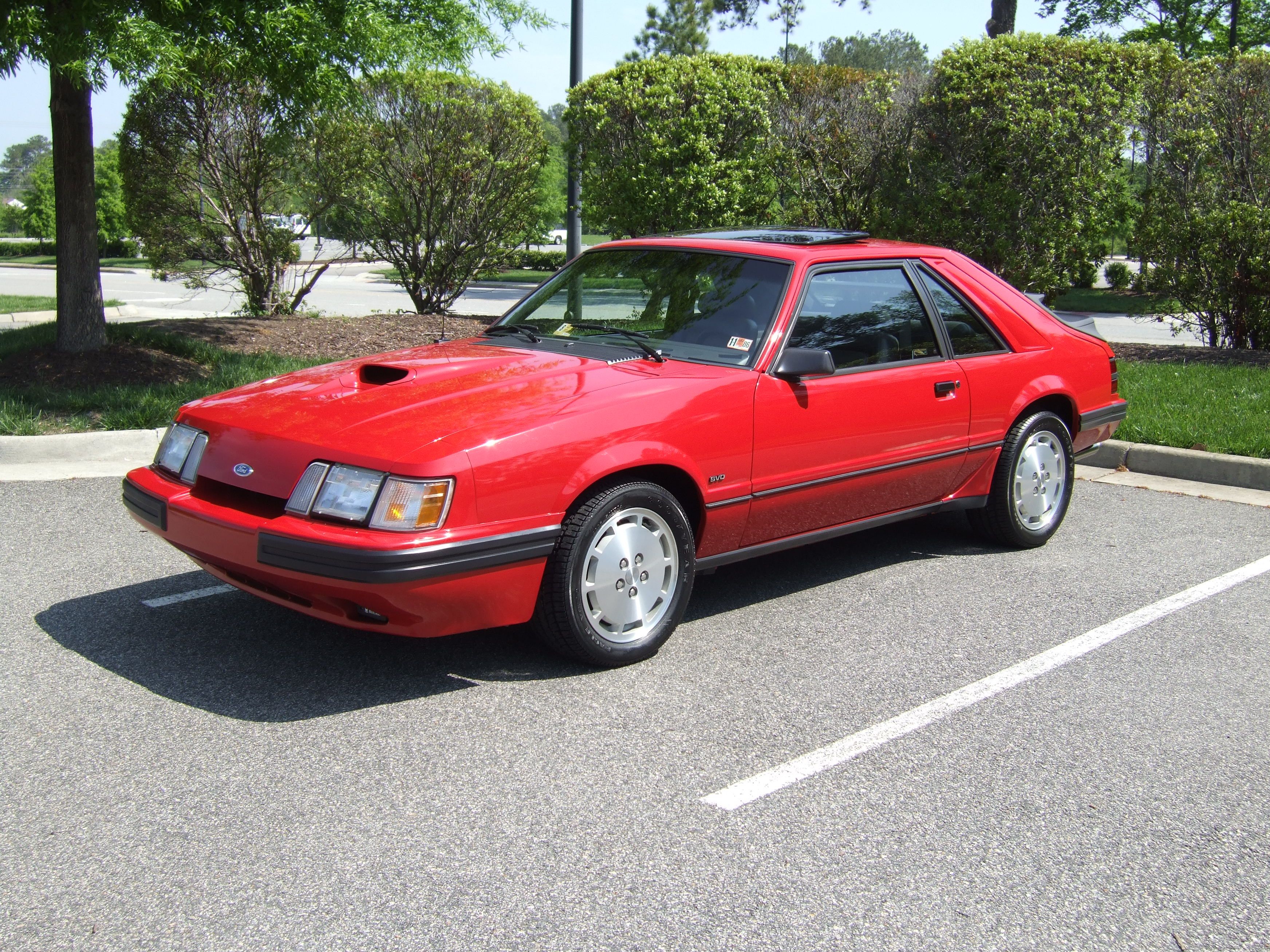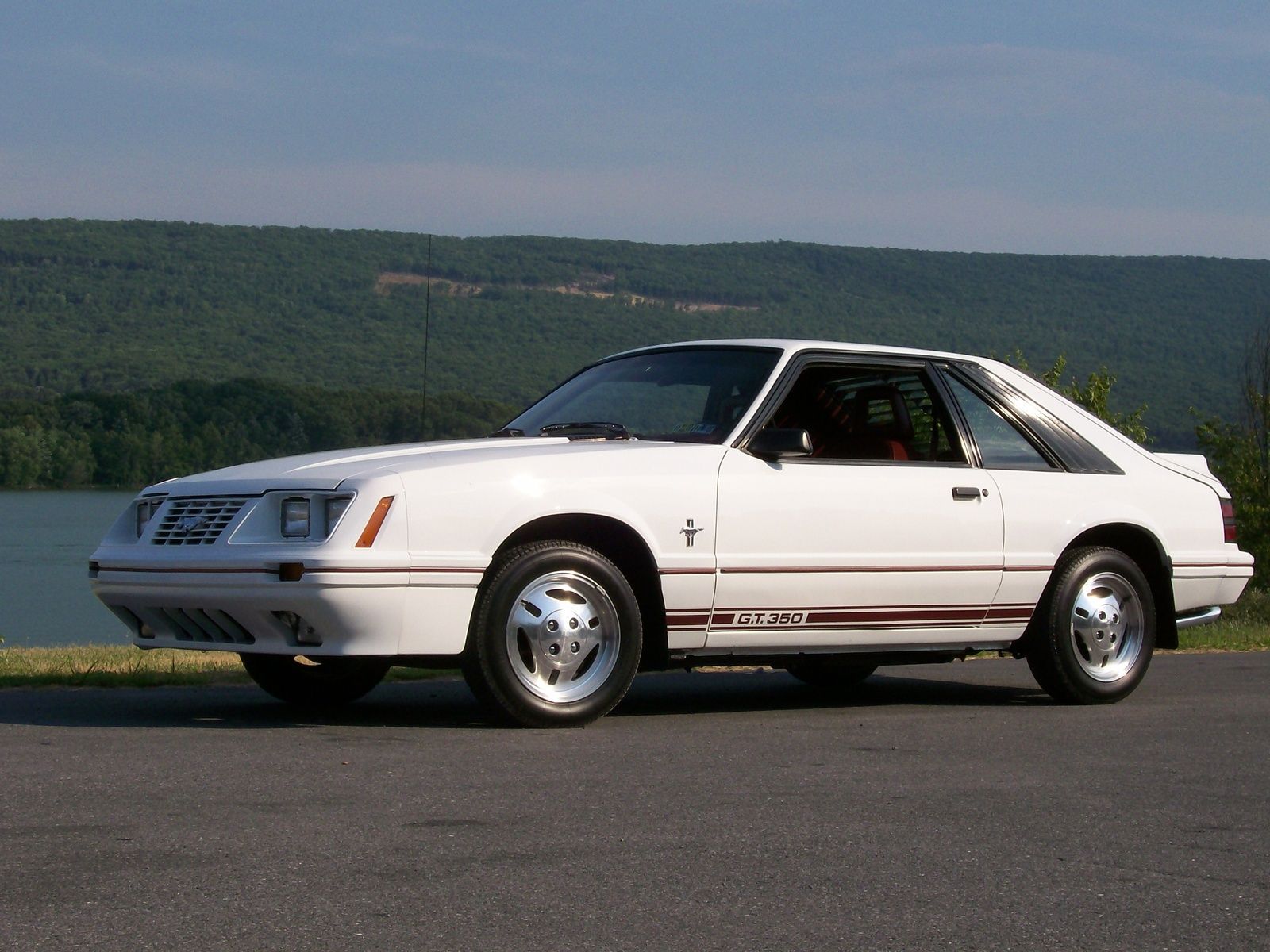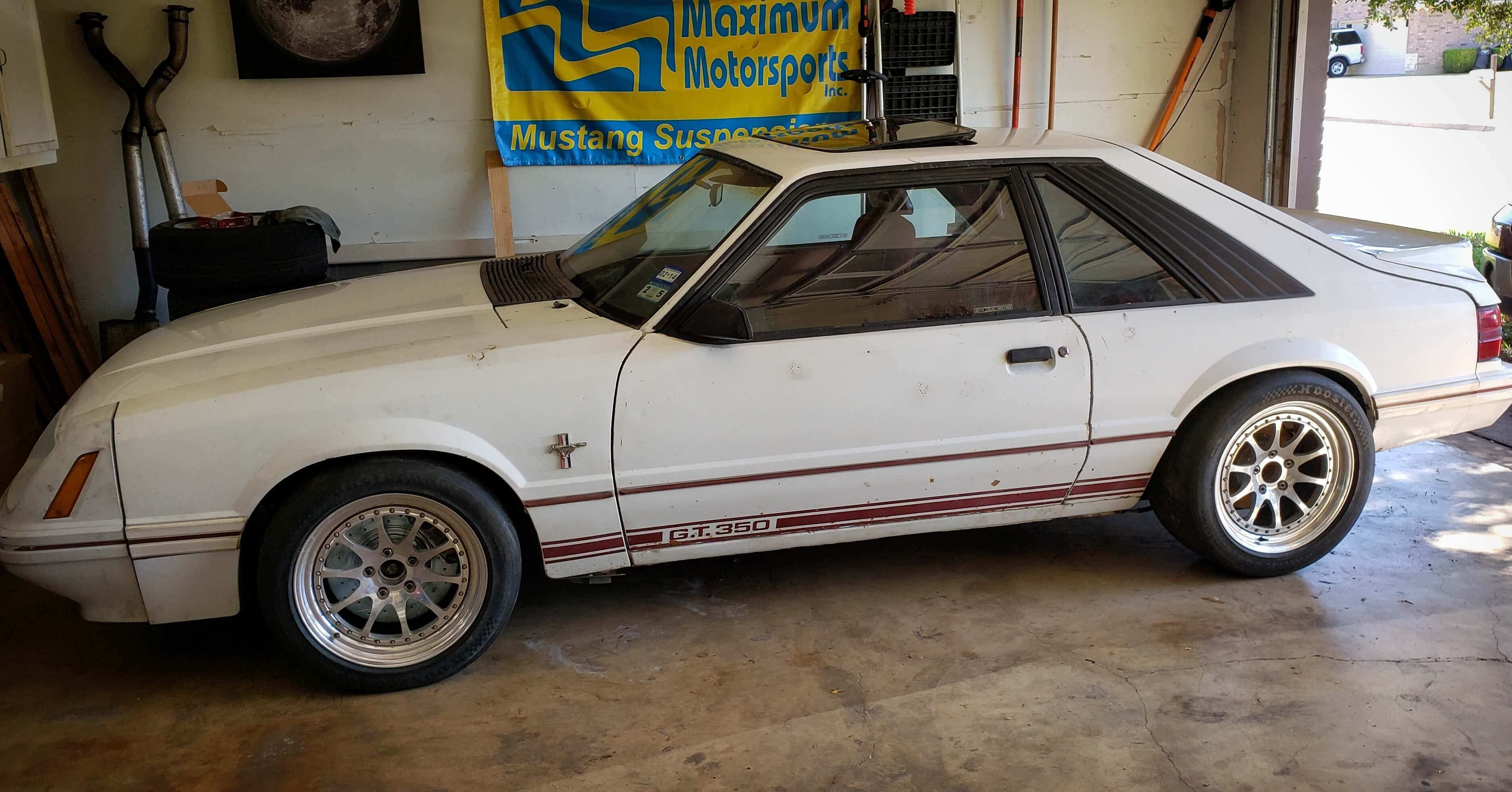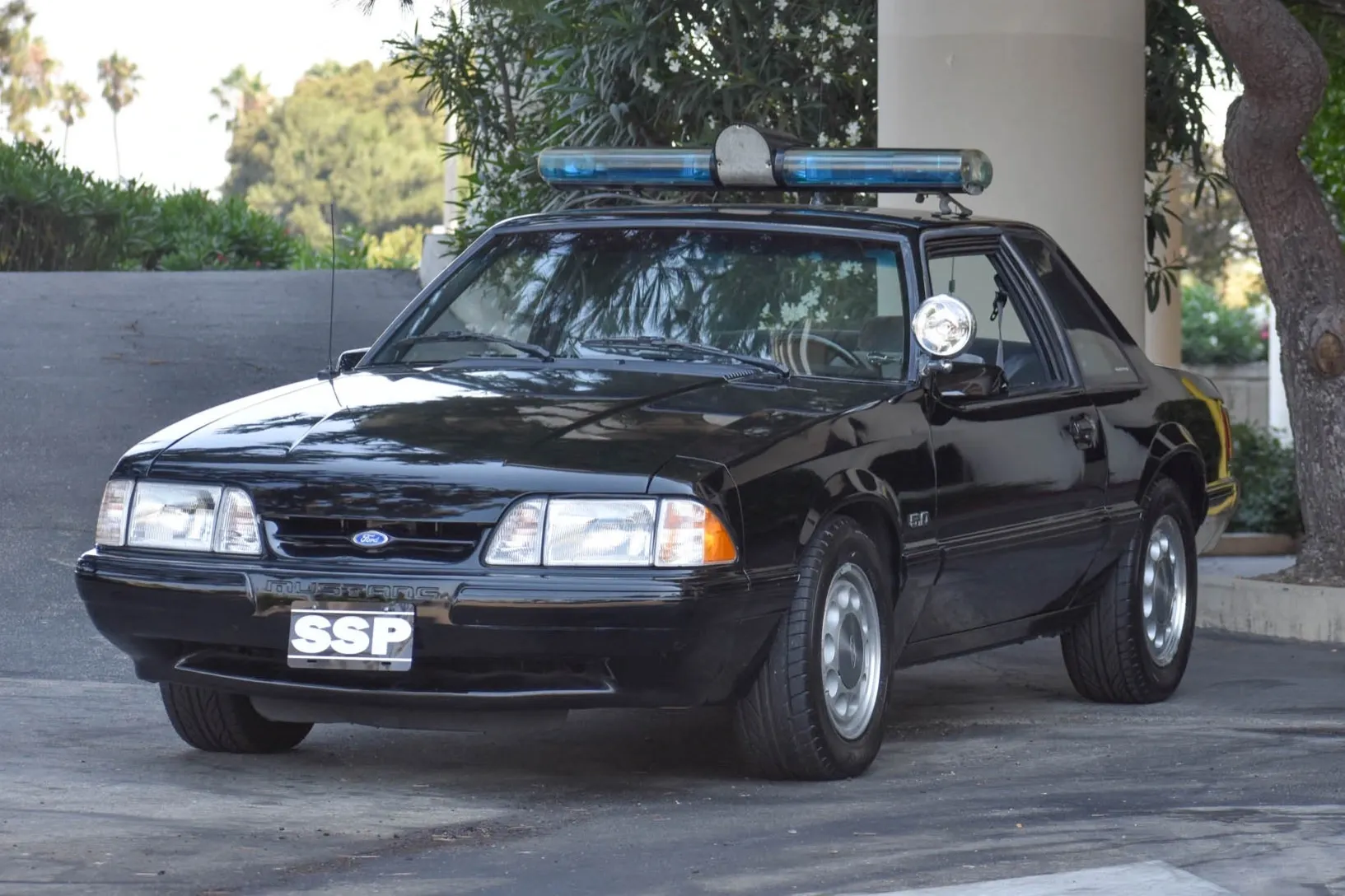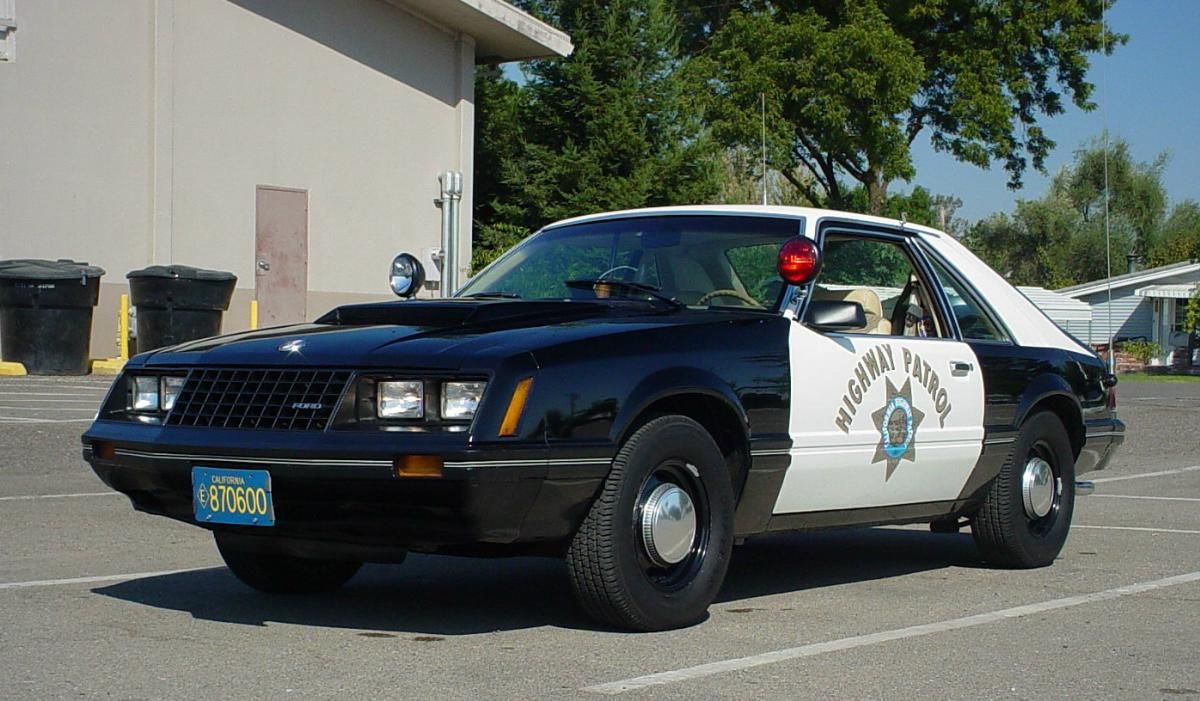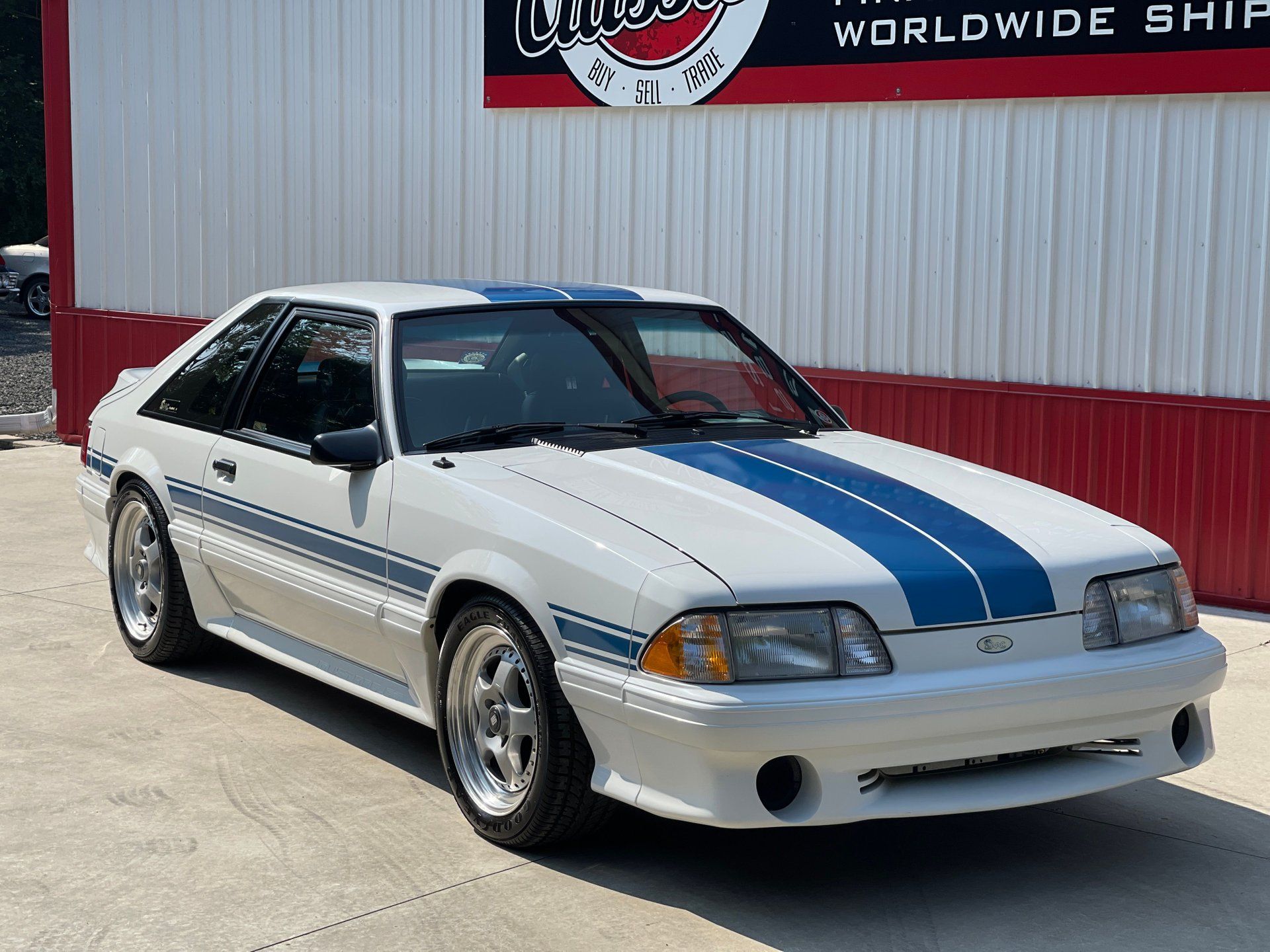Maybe the most iconic 1980's American car, the Fox Body Mustang came in many forms during its long run from 1979-1993. At first, the new car struggled and was almost the end of the Mustang — indefinitely — and was nearly replaced by the Ford Probe. Thankfully, the Fox Body was salvaged by Ford and the Mustang lives on.
Since the car was available in many flavors, it makes sense that not all of the Fox Body Mustang models would be famous. Aftermarket modifiers and small independent car manufacturers alike took interest in the Fox Mustang. Even Ford took interest in the Fox Body enough to produce hot rodded versions of it. What follows is a short collection of five famous Fox Body Mustangs and five that have been forgotten.
10 1993 Cobra: Famous
The 1993 Ford Mustang SVT Cobra was the first vehicle Ford's Special Vehicle Team (SVT) created. Ford's SVT department replaced its Special Vehicle Operations (SVO) department. The Cobra was unveiled at the Chicago Auto Show in 1992 and marked for 1993 production. Increased performance, new wheels, unique ground effects, and exclusivity make the 1993 SVT Cobra one of the most iconic Fox Body Mustangs ever produced. All 4,994 1993 Cobras were offered in only Red, Black, and Teal. Nine super-rare 1993 Cobras were offered in Vibrant Red Non-Clearcoat. Of course, SVT could not leave well enough alone and also created the more experiemental and race-only Cobra R, all 107 available only in red.
SVT changed much about the Fox Body Mustang to create the Cobra. They ditched the rear drum brakes in favor of discs (though they retained the four lug bolt pattern), enlarged the brake booster, seventeen inch wheels, and changed the heads, cam, intake, and injectors on the engine. The Cobra 5.0 had a larger cam, GT-40 heads, the iconic Cobra intake manifold, and 24lb/hr injectors. These upgrades allegedly netted ten horsepower over a standard 5.0 High Output engine, 235 horsepower versus 225 horsepower. The Cobra R would keep the Cobra engine, but it came with larger four wheel disc brakes, five wheel lugs, different wheels, and Koni suspension. The exterior styling retained the Mustang GT front fascia, however the side skirts lost the GT scoops near the rear wheels and the rear fascia is turned up allowing for exposed exhaust tailpipes. On the hatch is the iconic Cobra spoiler.
9 1979-1981 Cobra: Forgotten
The Fox Body Mustang generation concluded its fourteen year run (1979-1993) with a Cobra model. However, the third generation Mustang also began with a Cobra model available from 1979-1981. In 1979, over 17,000 Cobra Mustangs were produced. Production in 1980 reduced drastically to about 5,500. By 1981 around 1,800 were produced. Like all of the early Fox Body Mustangs (1979-1982), the Cobra is an eclectic car mechanically and visually. Admittedly, the early Cobra is aesthetically pleasing. Which is fortunate because early Cobra modifications were purely visual. It is a shame the early Cobra has fadded into obscurity because of how attractive and unique it is.
From 1979 to 1981, a hallmark Cobra trait was the black paint around the bottom of the car. Each year had unique front fascias, hoods, and rear spoiler options — in '79 there was not a rear spoiler, rather an awesome hood decal was optional. Maybe more interesting than the outside of the car, the engine and transmission options are incredibly cool. In '79 one could have either a 131 hp 2.3 turbo four cylinder or a 140 hp 5.0 V8. A four-speed manual or a three speed automatic were optional. For 1980 and 1981, the 5.0 V8 was replaced with a 4.2 V8 rated at 118 hp and 120 hp. A naturally aspirated I-4 and I-6 were optional, along with the 4.2 V8, and the only transmission was a five speed Tremec unit. It is unfortunate that this car is mostly forgotten. However, the early Cobra was not a cohesive, consistent package that was over shadowed by the Mustang Pace Car in 1979 – there is no wonder it faded.
8 1979 Pace Car: Famous
In 1979, the new Ford Mustang was selected as the Indianapolis 500 Official Pace Car and three Mustangs were turned into actual Indy Pace Cars. To celebrate the achievment, Ford introduced the commemorative edition Mustang Pace Car mid-year. The Pace Car is more exclusive than the '79 Cobra: 10,479 commemorative Pace Cars were produced compared to over 17,000 Cobras. For the 1979 Indy 500, twenty-four percent of television sets in the United States were tuned in to watch the race. That means millions of people saw the new Mustang parade around the famous track leading the Indy cars.
All 10,000+ commemorative Pace Cars look identical, with a unique front air-dam, black bottom with pewter top, orange molding pin stripe, full length cowl hood, the official pace car livery, and a rear spoiler. The hood and rear spoiler features translated to the 1980 and 1981 Mustang Cobras. The Pace Car had a black interior and the Recaro seats featured a trick white and black pattern similar to Porsche's Pepita Houndstooth fabric. A coveted Fox Body specific interior feature is the black netted halo headrests. For engines, the Pace Car was available with a 2.3 turbo four cylinder or a 5.0 V8. The V8 could be had with either a four speed manual or three speed auto transmission while the turbo four cylinder was manual only. Limited production, a massive audience to first witness it, and a clear offering with little variation undoubteldy made the 1979 Mustang Official Pace Car famous.
7 GLX: Forgotten
A one size fits all type of Mustang, the GLX was available as a hatch, coupe, and convertible from 1982-1983. Early in the Fox Body generation, Ford produced countless models from the entry level 'L' to 'Cobra' and 'GT.' The GLX Mustang was a step below the GT model after the GT replaced the Cobra in 1982. A GLX had the best parts of the lower level Foxes and the GT. On the outside the GLX has black moldings and front grille, and matching side mirrors. On the inside there is a four spoke steering wheel, wood grain dash trim, and map pockets on each door.
Under the hood options are the most interesting features of the GLX. One could spec their GLX with the 5.0 V8, a naturally aspirated 2.3 four-cylinder, or a 3.8 V6. The 3.8 V6 is know as the Essex V6 because of its manufacturing location of Essex Engine Plant, Windsor, Ontario, Canada. Horsepower was low for the Essex V6 at 112 hp. However, it is fascinating that the Fox Body was available with a V6 engine option. Most Fox Body Mustangs have either a 5.0 V8 or the 2.3 four-cylinder today. The GLX was available as either a manual or with a three speed C5 automatic. This car did not necessarily fade into total obscurity. Instead, while Ford did discontinue the GLX, the GLX was transformed into what would become the Special Service Package (SSP) Mustang because the SSP bridged the gap between GT and entry level Mustangs like the GLX.
6 Saleen Mustang: Famous
Steve Saleen recognized the potential of the Fox Body Mustang early. Beginning in 1984, Saleen began modifying Mustangs to out-perform the Ford issue. At the time of the Fox Body, Saleen was not a car manufacturer. Instead, Saleen was, and still is, a car modifyer. Saleen takes cars from auto makers like Ford, customizes them, and then sells them to customers as a modified version which is reflected in the cars new designation as 'Saleen (fill in the blank).' The focus of Saleen Mustang modification is performance. From the mid 1980's to 1993, Saleen performance modifications focused on the Mustang's appearance, suspension, brakes, and chassis.
The Saleen Fox Body Mustang may be the most attractive Fox Body produced – it oozes 1980's style and charisma. Exterior modifications included the iconic rear spoiler, an aggressive front fascia, graphics along the bottom side of the car in a flattering color, and subdued side skirts and rear fascia that flare the edges of the car and give it more curves and visual dynamism. Saleen relied on Ford's well sorted 5.0 High Output V8 for power. Early Saleens retained a four lug bolt pattern. However, nearly all Saleens are five lug and four wheel disc brake cars. Racecraft suspension was used to increase the cars composure. Flofit seats with netted halo headrests were used inside along with small "Saleen" embroidery on the door panels. This is a gorgeous car worth remembering.
5 McLaren M81: Forgotten
In 1980, McLaren, the legendary British racing house and automotive engineering giant, modified a Fox Body Mustang known as the McLaren Mustang M81. The 1980's were a special time in the automotive world. Following the 1970's, auto makers were producing less powerful cars and becoming more fuel conscious. However, at the same time, Group B racing would take off and some of the most memorable racing events in history would happen. The M81 may be the rarest Mustang in history since only eleven cars, counting the prototype, were made.
McLaren worked the 2.3 turbo four-cylinder engine from 131 hp from Ford to 175 hp. Unlike the later SVO Mustang fuel injected 2.3 engine, the M81 had a carburetor. The inside features a roll bar, Recaro seats, and a Racemark leather steering wheel. On the outside is the obvious IMSA style body styling with large and wide fenders, an aggressive hood, quad headlights and BBS wheels. How could a car such as this be forgotten? Perhaps it is too limited and an unaccomplished race car? It certainly has the right styling and performance bits. However, there may have been too few of them to go around and no obvious channels for press.
4 SVO: Famous
A performance product proving ground, the 1984-1986 Mustang SVO is a special car in the Fox Body Mustang product line. The SVO Mustang is a truly distinct Fox Body Mustang inside and out. The most obvious changes occured on the outside. A new quasi-futuristic nose and rear spoiler came standard on the car. From 1979-1986 the Fox Body Mustang had four individual headlights, two on either side. The quad headlight nose is nicnamed the 'four eyed' Fox Body. This new SVO nose did away with the four individual headlights and instead had a nose that anticipated the aero nose redesign of the 1987-1993 Fox Body. For a spoiler, the SVO had a double-decker spoiler that is visually shared with the Mercury XR4Ti (1985-1989), and the Ford Sierra RS Cosworth (1986-1992), and anticipated the Ford Focus RS Cosworth (1992-1996).
The SVO Mustang came standard with an intercooled version of the 2.3 four-cylinder turbo engine. In 1984 it was rated at 175 horsepower. By 1985, the 2.3 turbo four produced 205 hp. For 1986 the power was rated at 200 hp flat. Unlike previous Fox Body Mustangs, the SVO was only available with a five speed manual transmission. Also unlike other Fox Body Mustangs, the SVO came factory with four wheel disc brakes, a five lug bolt pattern, and Koni suspension. Not until the 1993 SVT Cobra would a Fox have four wheel discs again. The SVT Cobra R is the only other Fox to have a five lug bolt pattern. Made for a only a short period, 9,835 SVO Mustangs were produced. An SVO is Ford blend of hot-hatch, sports car, and performance experiement made to take on turbocharged European rivals. It is rightly a famous Fox Body Mustang.
3 1984 Mustang GT350: Forgotten
In 1984, Ford produced a non-Shelby GT-350 Mustang to celebrate the Mustang's 20th anniversary. There is no obvious answer for why Ford chose the GT-350 designation for the 20th anniversary car. Carroll Shelby sued Ford for their use of the GT-350 name without his permission. Other than Ford wanting to revive the GT-350 name, there appears to be no other obvious reason why the 20th anniversary Mustang in 1984 is called a GT-350. A 20th anniversary edition Mustang that came in white and red would have sufficed.
5,200+ 1984 20th anniversary GT-350 Mustangs were produced. All of them came in Oxford White with red interior and red GT-350 stripes along the bottom of the exterior. The car was available as either a hatchback or convertible, with either a turbo 2.3 four-cylinder or 5.0 V8, and with either a five speed manual or automatic transmission. Beyond the visual specifics of the car, there is nothing significantly unique to the GT-350 20th anniversary Mustang. The car is attractive and exclusive, however, the name does not make any sense. And, without anything truly unique to distinguish the car from other Mustangs, the faded into obscurity.
2 Ford Mustang SSP (Special Service Package): Famous
If you go to a Mustang car show you are bound to see a Special Service Package Mustang. Basically, an SSP car is a police department destined car. Almost every state highway patrol department (35 to be exact) ordered a SSP Mustang. The car was purposed with being a lightweight and quick option for police to chase down cars. In total, 15,000 Ford Mustang SSPs were bought between 1982 and 1993. These cars are infamous for being police Mustangs; it is the American equivalent of a Porsche 911 police car.
All of the examples came with the 5.0 V8 and many had a four speed automatic transmission. The 5.0 engine was left untouched internally. Optional modifications consisted of strengthened floor pans, a larger alternator, an engine and transmission oil coolers, and other fringe bits. The major limitation to the cars is the final drive ratio of 3.08:1. A more aggressive gear would have been much nicer, but tall gearing like a 3.08:1 helps increase top speed: if you you need to catch someone, you can do so with a higher top speed. A limited number of SSP cars were made over almost the entire production of the Fox Body Mustang and they have the added cool factor of being a cop car. It is obvious why this car is famous.
1 1992 SAAC MKI: Forgotten
Visually, this Fox Body Mustang is a beautiful. The blue stripes down the top and the placement of the side stripes is perfect. It is reminiscent of the original Shelby GT-350 Mustang. Standard equipment was the LX rear spoiler, a GT front fascia without the fog lights, subtle side skirts, and a GT rear fascia. Technically the SAAC MKI (the official designate for this Mustang) is not a Ford product because it was extensively modified by the Shelby American Automobile Club and was heavily inspired by the original GT-350. Shelby American Automobile Club at the time was the only organization able to use the Shelby name and they produced this car through their SAAC Car Company. When this car was being prototyped it carried the Shelby name.
Only sixty-five SAAC MKI cars were produced in 1992 exclusively. The 295 hp 5.0 V8 engine featured a GT-40 tubular intake, GT-40 cast iron heads, a larger throttle body, larger "shorty" headers, and underdrive pulleys. The suspension and chassis featured Koni dampers, Shelby springs, a Shelby strut tower brace, a four point roll bar, and some other stiffening components. Four wheel disc brakes and five lugs where at each corner. Shelby provided the Simmons muti piece wheels. On the inside SAAC Car Company provided custom black leather with unique SAAC accents. What killed this car was the 1993 SVT Cobra which adopted the engine and suspension mods. Ford soaked up all of the GT-40 cylinder heads and developed a Cobra specific intake that proved to be a rival. Had this car been produced longer, it may have become famous.

.jpg)
